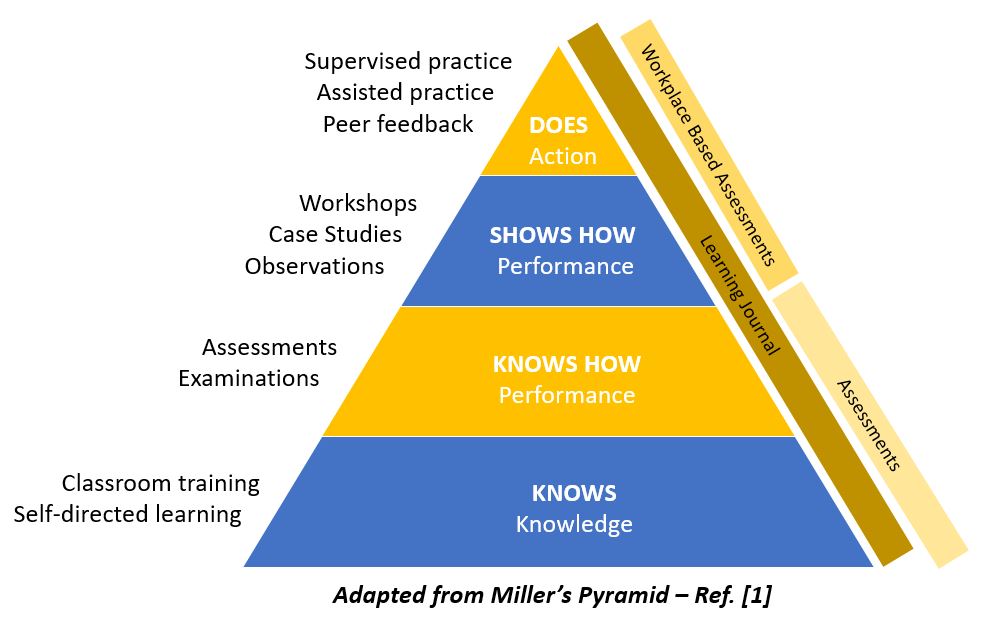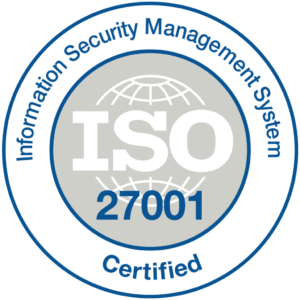When I did my first solo parachute jump, you quickly realize that all the theory and classroom work on the ground is no substitute for the experience of actually leaving the plane. Then after you landed and even now after many years, I can tell you almost word for word the five minute debrief and feedback from the Jump Master of what I forget to do on that first jump and needed to improve to stay alive on the second jump. This was the ultimate authentic “on-the-job” learning experience with direct and timely feedback!
There is an adrenalin rush we all feel when we try that new tool, conduct a task for the first time, or manage a new project at work. The medical world has long talked about the need for authentic workplace based assessments based on the pyramid of Miller 1. As the learner climbs the pyramid from classroom-based training to the top and the emphasis is for on-the-job training, there is a challenge to have the right learning and assessment tools in place.
For the health professions, the challenges for on-the-job training is that it requires a real patient, a supporting supervisor, and peers. Health is not the only profession that has had to tackle these challenges. There are many other professions, where failure as part of an on-the-job learning experience could be very costly or even deadly:
- Architects being supervised on their first design and having peer reviews for their designs to ensure the building is sound.
- Airline pilots using simulators and starting in smaller more manageable planes.
- Ships captains looking over the shoulder of the young officer as they steer the helm through the narrow straights.
- Veterinarians 2, where owners are passionate about their pets and a mistake would be the same grieving is as real as a close relative passing.

As educators, the key is to have an integrated model for delivering the learning experiences with supporting assessments across the breadth and height of the pyramid. An integrated model is so important, as we need to have a gate that clearly checks that this trainee or learner is ready to tackle their first real-world situation, perhaps under close supervision. This model and supporting set of tools has to be able to:
- Link the required level of skill and competency between the learning activity and the assessment.
- Provide a framework for measuring success for the learner to see their progress and see what comes next.
- Capture the observations and feedback within the workplace from the supervisor or peers in a meaningful way that coaches and guides the learner to opportunities for improvement.
- Give ample opportunity for the learner to document their experience and reflect on what they have learned and need to do next.
- Have the smarts to capture assessment results and workplace based feedback in a secure and sustainable manner.
On the right-hand side of the image are the three functional areas for assessing the learner’s progress that should be delivered as this integrated package. Addressing these areas separately will not help to deliver authentic workplace based assessments.
Andrew Parker
VP Customer Solutions
References
1 Miller GE. The assessment of clinical skills/competence/performance. Acad Med 1990; 65 (Suppl 9): S63– 7.
2 Hecker, Kent & Norris, Jill & Coe, Jason. (2012). Workplace-Based Assessment in a Primary-Care Setting. Journal of veterinary medical education. 39. 229-40. 10.3138/jvme.0612.054R.
Learn more about Elumina’s online exam and assessment solutions here: Exam Management

 1300 313 368
1300 313 368 sales@eluminaelearning.com.au
sales@eluminaelearning.com.au 1 Margaret Street, Sydney, NSW
1 Margaret Street, Sydney, NSW
Recent Comments